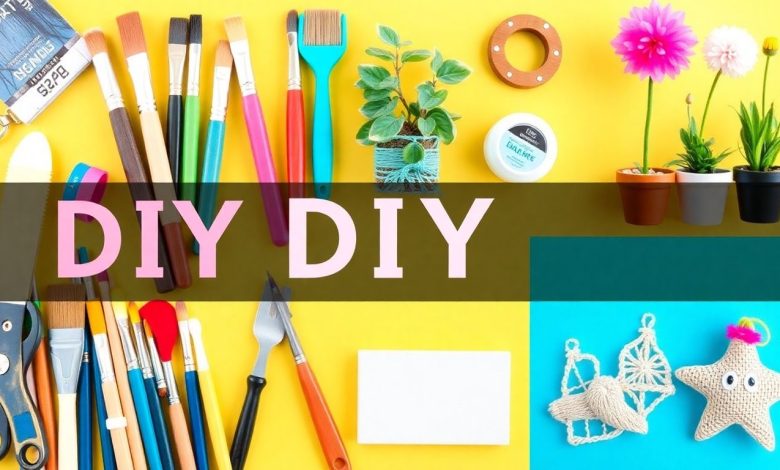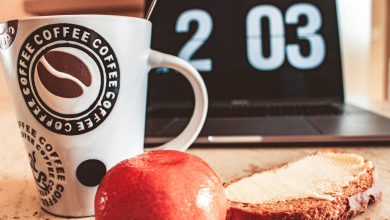What I Wish I Knew a Year Ago About DIY & Lifestyle Hacks

A year ago, I was lost in the world of DIY and lifestyle hacks. I stumbled through projects, making mistakes left and right, and wishing I had someone to tell me the basics. If only I had known then what I know now! From the right tools to clever ways to repurpose items, I’ve learned so much. Here’s a collection of insights that could save you time, money, and a whole lot of frustration.
Key Takeaways
- Invest in essential tools to make DIY projects easier.
- Repurposing items can save money and add character to your home.
- Budget-friendly improvements can transform your living space without breaking the bank.
- Time-saving hacks can streamline your daily tasks and reduce stress.
- Sustainable practices in DIY can benefit both your home and the environment.
Essential DIY Tools Every Homeowner Should Have

Okay, so last year I was totally clueless about tools. I mean, I knew a hammer was for nails, but that was about it. Now, after a year of DIY adventures (and misadventures), I’ve learned what tools are actually essential for any homeowner. Trust me, investing in these will save you time, money, and a whole lot of frustration.
Must-Have Hand Tools for Beginners
Let’s start with the basics. You absolutely need a good set of screwdrivers (both Phillips head and flathead), an adjustable wrench, a measuring tape (at least 25 feet), a level, and a decent hammer. Don’t cheap out on these. A good set will last you for years. I also found a utility knife with replaceable blades to be super useful for opening boxes, cutting drywall, and a million other things. Pliers are also a must. I recommend getting a set that includes needle-nose pliers, slip-joint pliers, and cutting pliers. These will help you grip, bend, and cut wires and other materials.
- Screwdrivers (Phillips and flathead)
- Adjustable wrench
- Measuring tape
- Level
- Hammer
Power Tools That Make Life Easier
Okay, now we’re talking. Power tools can seriously speed up your projects. A cordless drill/driver is the first thing you should buy. It’s so versatile for drilling holes and driving screws. A circular saw is great for cutting lumber, and a jigsaw is perfect for making curved cuts. I also really like my orbital sander for smoothing surfaces before painting or staining. It makes a huge difference in the final result. Don’t forget safety glasses and ear protection when using power tools!
I remember trying to build a bookshelf with just hand tools. It took forever, and the cuts were all wonky. Once I got a circular saw, it was a game changer. The project went so much faster, and the results were way better.
Storage Solutions for Your Tools
Having all these tools is great, but you need a place to store them. Otherwise, they’ll just end up scattered around your house. A basic toolbox is a good start, but I quickly outgrew mine. Now I have a rolling tool chest with drawers, and it’s amazing. It keeps everything organized and easy to find. Pegboards are also great for hanging tools on the wall. This frees up space in your drawers and makes it easy to see what you have. Don’t forget about smaller organizers for screws, nails, and other small parts. These will prevent you from spending hours searching for the right size screw.
Here’s a simple table to help you decide on storage:
| Storage Type | Pros | Cons |
|---|---|---|
| Toolbox | Portable, inexpensive | Limited space, can get disorganized easily |
| Tool Chest | Lots of space, organized | Expensive, not very portable |
| Pegboard | Easy to see tools, saves drawer space | Can look cluttered if not organized well |
Creative Ways to Repurpose Household Items

Transforming Old Furniture
Okay, so you’ve got that old dresser sitting in the garage, right? The one that’s been there since, like, forever? Don’t just dump it! Give it a new life! I’m serious. Sand it down, slap on some fresh paint (maybe a funky color?), and bam! You’ve got a totally unique piece. I did this with an old coffee table last year. It was hideous, all scratched up and outdated. Now it’s this cool, modern centerpiece in my living room. You can even replace the hardware (new knobs, pulls, etc.) to really change the look. Seriously, the possibilities are endless. Don’t be afraid to get creative and try something new. You might surprise yourself.
Using Glass Jars for Organization
I’m obsessed with glass jars. Seriously, I have them everywhere. They’re perfect for organizing everything from pantry staples (pasta, rice, beans) to bathroom supplies (cotton balls, Q-tips, etc.). Plus, they look so much nicer than plastic containers. I even use them to store my craft supplies. And the best part? You can get them for free! Just save your old pickle jars, pasta sauce jars, whatever. Wash them out, peel off the labels, and you’re good to go. You can paint the lids, add labels, or just leave them plain. It’s a super easy and cheap way to get your life in order. Trust me, once you start using glass jars, you’ll never go back.
Repurposing Fabric Scraps
Do you have a pile of fabric scraps sitting in a corner somewhere? I know I do. Don’t throw them away! There are so many cool things you can do with them. You can make quilts, pillows, tote bags, even clothes! I recently made a bunch of reusable shopping bags out of some old curtains. They’re super sturdy and way more stylish than those flimsy plastic bags. You can also use fabric scraps to patch up holes in your clothes, make headbands, or create unique wall art. Get creative and see what you can come up with. It’s a great way to reduce waste and add a personal touch to your home.
Repurposing items isn’t just about saving money; it’s about reducing waste and giving new life to things that would otherwise end up in a landfill. It’s a small change that can make a big difference.
Budget-Friendly Home Improvement Tips
Cost-Effective Painting Techniques
Okay, so painting seems simple, right? But trust me, there are ways to save a buck or two. First, always check for paint sales and discounts at your local hardware store. You’d be surprised how often they mark down perfectly good paint. Also, consider using a paint calculator online to estimate how much paint you actually need – no more buying way too much and having it sit in your garage for years. Don’t forget to prime! It might seem like an extra step (and expense), but it can actually save you money in the long run by requiring fewer coats of paint. And when it comes to tools, invest in some quality brushes and rollers; they’ll last longer and give you a better finish. I’ve learned the hard way that cheap brushes leave bristles everywhere.
- Look for paint sales and discounts.
- Use a paint calculator.
- Invest in quality brushes and rollers.
DIY Landscaping Ideas
Landscaping can get expensive fast, but it doesn’t have to. One of the easiest ways to save money is to start small. Instead of trying to overhaul your entire yard at once, focus on one area at a time. Plant perennials instead of annuals; they’ll come back year after year, saving you money in the long run. Also, consider propagating plants from cuttings – it’s a great way to get new plants for free. Check out local nurseries for end-of-season sales; you can often find great deals on plants that are just past their prime. And don’t underestimate the power of mulch! It helps retain moisture, suppresses weeds, and makes your yard look instantly more polished. Simple lawn edging can also make a big difference.
I remember when I first bought my house, I was so eager to have the perfect yard. I spent a fortune on plants and landscaping materials, only to realize that I had no idea what I was doing. Most of the plants died within a few months, and I ended up having to start all over again. Now, I take a much more gradual approach, focusing on one small area at a time and doing my research before I buy anything.
Upcycling Projects for Your Home
Upcycling is your best friend when it comes to budget-friendly home improvement. Got an old dresser? Turn it into a bathroom vanity. Have a pile of pallets? Build a coffee table or a headboard. Old t-shirts? Make a quilt! The possibilities are endless. Not only does upcycling save you money, but it’s also a great way to reduce waste and add some unique character to your home. Check out Pinterest or YouTube for inspiration; there are tons of tutorials out there. I recently turned some old glass jars into organization solutions for my pantry, and it made a huge difference. Plus, it was free!
| Item | Upcycling Idea | Cost (Approx.) | Savings (Approx.) |
|---|---|---|---|
| Old Dresser | Bathroom Vanity | $50 | $200+ |
| Pallets | Coffee Table | $20 | $100+ |
| Glass Jars | Pantry Organization | $0 | $50+ |
Time-Saving Hacks for Everyday Tasks
Meal Prep Strategies That Work
Okay, so meal prepping always sounds like a great idea, right? But then Sunday rolls around, and the thought of spending hours chopping vegetables is just… ugh. I get it. The trick is to start small. Don’t try to prep every single meal for the entire week. Instead, focus on one or two key meals, like lunch or breakfast. For example, overnight oats are a lifesaver. Throw some oats, milk, chia seeds, and fruit into a jar the night before, and boom – breakfast is ready. Or, spend an hour on Sunday prepping a big batch of chicken and roasting some veggies. Then you can throw together quick salads or bowls throughout the week. It’s all about making it manageable so you actually stick with it.
Quick Cleaning Tips for Busy Lives
Let’s be real, nobody has time to deep clean every day. But a few quick cleaning habits can make a huge difference. Keep cleaning supplies in convenient locations, like under the bathroom sink or in the kitchen. This way, you can easily wipe down surfaces after you use them. I also swear by the “one-minute rule” – if a task takes less than a minute, do it immediately. Wipe up a spill, put away a dish, etc. It prevents small messes from turning into big ones. Also, a robot vacuum is a game changer. Set it to run while you’re at work, and you’ll come home to clean floors every day. It’s an investment, but totally worth it for the time it saves.
Efficient Grocery Shopping Techniques
Grocery shopping can be a huge time suck, especially if you go in without a plan. The first step is to always make a list before you go to the store. And I mean a detailed list, organized by aisle if possible. This will help you avoid impulse buys and wandering around aimlessly. Another tip is to shop during off-peak hours, like early in the morning or late at night. The store will be less crowded, and you’ll be able to get in and out much faster. Finally, consider using grocery delivery or pickup services. It might cost a few extra dollars, but it can save you a ton of time and hassle.
I started doing online grocery shopping a few months ago, and it’s been a game changer. I used to spend at least an hour at the store every week, but now I can place my order in about 15 minutes and just pick it up on my way home from work. It’s so much more convenient, and I’m less likely to buy things I don’t need.
Gardening Hacks for a Thriving Garden

Companion Planting for Better Yields
Okay, so companion planting sounds super fancy, but it’s really just about putting the right plants next to each other. Some plants are like best friends in the garden, helping each other grow, while others are total rivals. For example, planting basil near tomatoes can help deter pests and even improve the tomato flavor. It’s all about creating a little ecosystem where everyone benefits.
Here are a few popular pairings:
- Carrots and onions: Onions repel carrot root flies, and carrots repel onion flies.
- Marigolds and almost anything: Marigolds deter nematodes and other soil pests.
- Beans and corn: Beans fix nitrogen in the soil, which corn loves.
Natural Pest Control Methods
I used to reach for the chemical stuff the second I saw a bug, but now I’m all about natural pest control. It’s better for the environment, better for my family, and honestly, it works just as well. One of my favorite tricks is using diatomaceous earth. It’s basically fossilized algae, and it’s harmless to humans but deadly to insects. I also make my own insecticidal soap with just water and dish soap. It’s super effective for getting rid of aphids and other soft-bodied pests.
Honestly, switching to natural pest control has been a game-changer. My garden is healthier, and I don’t have to worry about spraying harmful chemicals everywhere. Plus, it’s kind of fun experimenting with different solutions and seeing what works best.
Seasonal Gardening Tips
Gardening isn’t a one-size-fits-all kind of thing. What works in the spring definitely won’t work in the fall. In the spring, it’s all about starting seeds indoors and preparing the soil. I usually start my tomatoes and peppers indoors around March so they’re ready to go when the weather warms up. Summer is all about watering, weeding, and harvesting. And then in the fall, it’s time to clean up the garden, plant cover crops, and prepare for winter. Each season has its own rhythm, and learning to work with it is key to a successful garden.
Here’s a quick seasonal checklist:
- Spring: Start seeds indoors, prepare garden beds, plant early crops.
- Summer: Water regularly, weed, harvest crops, control pests.
- Fall: Clean up garden, plant cover crops, prepare for winter.
Organizational Hacks to Declutter Your Space

Okay, so last year I was a total mess. My apartment looked like a tornado hit it, and I was constantly losing things. It was stressful! But I’ve learned a few tricks since then that have seriously helped me get my act together. It’s not perfect, but it’s a HUGE improvement.
Creative Storage Solutions
Think outside the box! I used to just shove everything in closets, but now I’m all about maximizing space.
- Use vertical space: Shelves are your best friend. I got some cheap ones from a garage sale and put them up in my bathroom and kitchen.
- Under-bed storage: Those plastic bins are lifesavers. I keep off-season clothes and extra linens in them.
- Multi-purpose furniture: My coffee table has storage inside, which is perfect for blankets and remotes.
Decluttering Techniques That Actually Work
This is the hardest part, honestly. I’m a bit of a hoarder, but I’ve found a few things that help me let go.
- The 20-Minute Rule: Set a timer for 20 minutes and just focus on one area. You’d be surprised how much you can get done in that time.
- The One-In-One-Out Rule: If you buy something new, get rid of something old. This helps prevent clutter from building up.
- Ask Yourself the Hard Questions: Do I really need this? Have I used it in the last year? If the answer is no, it’s time to donate or toss it.
Decluttering isn’t just about getting rid of stuff; it’s about creating a space that makes you feel good. It’s about being intentional with what you keep and letting go of what no longer serves you.
Organizing Your Digital Life
It’s not just physical clutter that gets me down; my digital life was a disaster too! My desktop was covered in random files, and my inbox was overflowing. Here’s what I did:
- Unsubscribe from emails: Seriously, do it. You don’t need all those promotional emails clogging up your inbox.
- Create folders: Organize your files into folders so you can actually find what you’re looking for.
- Back up your data: This is so important! I use a cloud service to back up my photos and documents, just in case something happens to my computer. Losing all your important files is a nightmare.
Sustainable Living Through DIY Projects
It’s amazing how many things you can do yourself to live a more sustainable life. It’s not just about saving money, but also about reducing waste and knowing exactly what goes into the products you use. I’ve found that DIY projects are a great way to contribute to a healthier planet, one small step at a time.
Creating Your Own Cleaning Products
Making your own cleaning products is way easier than you think, and it cuts down on all those harsh chemicals in your home. Plus, you know exactly what’s in them! I started with a simple all-purpose cleaner using vinegar, water, and some essential oils for scent. It works great on most surfaces, and I feel better knowing I’m not spraying toxic stuff around my house. You can find tons of recipes online for everything from laundry detergent to dish soap. It’s a fun way to experiment and find what works best for you.
DIY Composting Solutions
Composting is a game-changer for reducing waste. I was intimidated at first, but it’s actually pretty simple. You can start with a small bin in your backyard or even an indoor composter if you don’t have much space. Just throw in your food scraps, yard waste, and some brown materials like leaves or cardboard.
Here’s a simple breakdown:
- Greens: Food scraps, coffee grounds
- Browns: Leaves, cardboard, paper
- Water: Keep it moist, not soggy
Composting not only reduces landfill waste but also creates nutrient-rich soil for your garden. It’s a win-win!
Energy-Saving Home Improvements
There are lots of small DIY projects you can do to save energy and lower your utility bills. One of the easiest is sealing up drafts around windows and doors. You can use weather stripping or caulk to fill in any gaps. Another simple project is switching to LED light bulbs, which use way less energy than traditional bulbs.
Here are some other ideas:
- Install a programmable thermostat.
- Add insulation to your attic.
- Use power strips to turn off electronics when not in use.
Final Thoughts
Looking back on the past year, I wish I had known just how much easier life could be with a few simple hacks. From organizing my space to saving time in the kitchen, these tips have made a real difference. Sure, I stumbled a lot along the way—like that time I tried to fix a leaky faucet and ended up with water everywhere. But each mistake taught me something new. If you’re just starting out, don’t be afraid to experiment and make a mess. It’s all part of the learning process. So, grab your tools, get creative, and remember: every little hack can lead to a big improvement in your daily life.
Frequently Asked Questions
What basic tools should I start with for DIY projects?
You should have some basic hand tools like a hammer, screwdrivers, pliers, and a tape measure. These tools help you with many simple tasks around the house.
Are power tools necessary for beginners?
Not really, but they can make some jobs easier. A drill and a saw are good options if you plan to do more complex projects.
How can I reuse items I already have at home?
You can turn old furniture into new pieces, use glass jars for storage, or make crafts from fabric scraps.
What are some cheap ways to improve my home?
You can paint walls for a fresh look, do simple landscaping, or upcycle old items into something useful.
How can I save time on daily chores?
Try meal prepping on weekends, use quick cleaning tricks, and make a shopping list to speed up grocery trips.
What are some easy gardening tips for beginners?
Planting compatible plants together helps them grow better, use natural ways to keep pests away, and know what to plant in each season.




One Comment